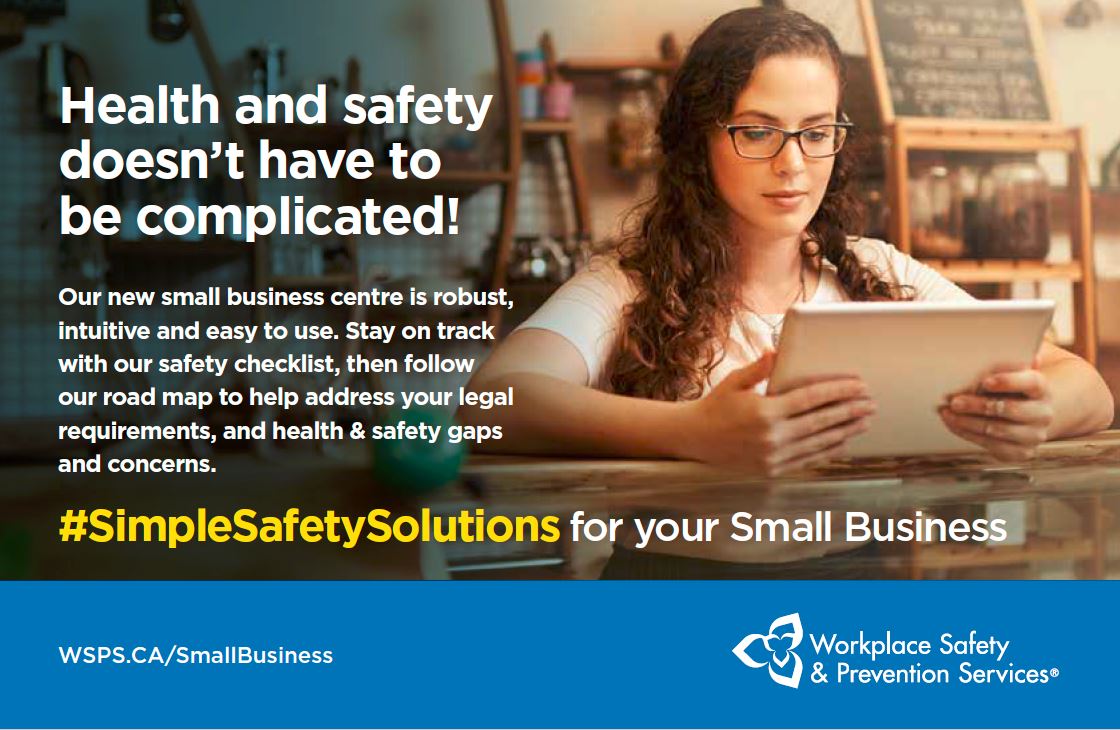Is low risk perception a problem in your workplace?
Many people may find themselves completing the same jobs and tasks daily. But how many times do they pause to consider the risks that are related to these seemingly mundane tasks?
“If people don’t fully appreciate the risks, health and safety protocols may not be top of mind,” says Hamish Morgan, Consulting Services Manager at WSPS.
What is low risk perception?
Low risk perception refers to the cognitive bias in which individuals underestimate the potential dangers or hazards present in their work environment. “Over time, as people become more comfortable with a task, they can become complacent.” When the job becomes routine, they don’t think about the risks. They forget that certain procedures are in place specifically to protect them. Managers and supervisors can become relaxed too when it comes to reviewing and enforcing those procedures.
Competing pressures to get a job done can inadvertently downplay the risks as well. Without them being top of mind, safe protocols are less likely to be applied in the workplace.
Don’t let an injury be a reminder of risk. “You need to continuously communicate the risks in a way that workers, supervisors, and managers can relate to,” says Hamish. He emphasizes the importance of reminding everyone what’s at stake when health and safety procedures are not followed. “It’s not about fearmongering,” says Hamish. “It’s about making sure everyone understands the reality of the consequences when health and safety protocols are not prioritized.”
Communicating risk
Keep health and safety top of mind to prevent low risk perception with these tips:
- Regularly communicate the potential outcomes of an incident through internal campaigns, videos, and meeting discussions. Go beyond what the injury would look like. Show how this type of injury would impact a person’s family and daily life.
- Embed risk information in the training. It’s not enough to explain how to complete a task safely. People want to understand why. Include information about past injuries and how procedures have been adapted as a result.
- Have Threads of Life speakers, or others in the community, share their stories. Threads of Life is a Canadian registered charity dedicated to supporting families after a workplace tragedy. Their volunteers share how a life-altering workplace injury, occupational disease, or work-related fatality has impacted their families. When people learn about an actual event that occurred and meet the people impacted, it helps others understand the real consequences of not taking health and safety precautions.
- Include supervisors and managers in your campaigns and communications about risks. Harness the internal responsibility system (IRS) by making sure all workplace parties have a clear understanding of the risks. With an established IRS, people will hold each other accountable to following health and safety procedures. When managers and supervisors understand the potential outcomes, they are less likely to look the other way when safety procedures are ignored.
- Ensure workers who perform the task participate in risk assessments along with experienced workers and supervisors who can share insight from past incidents. Going through the risk assessment process—thinking about what could happen and how it could happen—will help keep these risks top of mind. It will help everyone develop an understanding of why certain procedures are so important.
- Staff will take cues from leadership. If safety is prioritized it will be evident in the workplace culture and part of regular discussion. A detailed assessment, with an appreciation of the risks, can be an important foundation for effective procedure development and training. Refresher training with follow up is a good way to ensure everyone is thinking about potential consequences. Enforcement of procedures can be another.
Free resources to help
- Free Hazard Assessment Tool - Download and use this template to control hazards and reduce injuries and illnesses in your workplace.
- Video: How to Identify and Assess your Hazards Using the WSPS Hazard Assessment Tool - This short video walks you through the WSPS Hazard Management Tool so you can begin identifying and prioritizing hazards in your workplace.
- Perform a hazard assessment to make your business safer: a step-by-step guide - When your employees arrive at work, are they aware of the hazards around them? Find out how to assess and control hazards in your business to keep your workers safe.
- Internal Responsibility System (IRS) Primer - This free guide will help you understand your role and the role of others in protecting workers from harm.
- Safety Connection: Hazards and Risks: An Introduction (1.5 hours free webinar, November 6, 2023)
The information in this article is accurate as of its publication date.
Have health and safety questions? Please contact Denise Lam, WSPS Account Manager, Small Business at Denise.Lam@wsps.ca.
About Workplace Safety & Prevention Services (WSPS)
Workplace Safety & Prevention Services (WSPS) is a not-for-profit organization committed to protecting Ontario workers and businesses. A proud partner in Ontario’s occupational health and safety system and a trusted safety advisor since 1917, WSPS has a rich history of making Ontario workplaces safer. WSPS serves the manufacturing, agricultural and service sectors. WSPS offers unparalleled health and safety expertise, consulting, training and resources for businesses of any size. For more information visit WSPS.ca.
Copyright information
This article was prepared by Workplace Safety & Prevention Services (WSPS). At WSPS we are committed to helping businesses understand their risks and legal obligations to stay in compliance and build safer workplaces. If you would like permission to republish or use information in this article, please contact Jessica Bowes, Content Development Lead at jessica.bowes@wsps.ca.



%202023.png)


